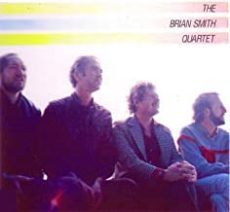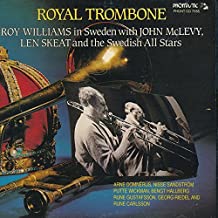
Daily Dose Of Jazz…
David Lee, Jr. born January 4, 1941 in New Orleans, Louisiana played professionally from his early teens. While serving in the U. S. Army, he was a member in several bands. In 1969, he co-founded the New Orleans Jazz Workshop.
In 1969 Dizzy Gillespie brought Lee into his band and soon after he was working with Roy Ayers in 1971 and Sonny Rollins for three years beginning in 1972. The Rollins recordings were hard swinging but included the plethora of tempos of the Seventies.
Forming a quartet but never recording as a leader, he continued to work as a sideman. On August 4, 2021, drummer and composer David Lee, who recorded Yoshiaki Masuo, Charlie Rouse, Lonnie Liston Smith and Richard Wyands among others, transitioned at 80 years of age.

More Posts: bandleader,composer,drums,history,instrumental,jazz,music

Daily Dose Of Jazz…
Brian Smith was born on January 3, 1939 in Wellington, New Zealand and studied piano in his youth but was primarily an autodidact on reeds. He played locally in pop and jazz groups before moving to England in 1964, where he played with Alexis Korner’s Blues Incorporated.
Following this stint he played at Ronnie Scott’s Jazz Club from 1966 to ‘67 and in the big bands of Tubby Hayes and Maynard Ferguson from 1969 to 1974. Smith went on to work with the group Nucleus from 1969 to 1982. During the next two decades he also performed with Mike Westbrook, Neil Ardley, Mike Gibbs, the Spontaneous Music Ensemble, Keith Tippett, Pacific Eardrum and Paz.
1982 saw the return to New Zealand, where Brian began playing with his own quartet. His 1984 album Southern Excursions was named Australian Jazz Record of the Year. Based out of Auckland, working with Frank Gibson, Jr. later in the Eighties, his Moonlight Sax albums were chart successes in New Zealand. Saxophonist and flautist Brian Smith continues to perform and record.

More Posts: bandleader,flute,history,instrumental,jazz,music,saxophone

Requisites
Down Town ~ Guido Manusardi Trio | By Eddie Carter
This morning’s choice from the library is Down Town (Soul Note SN 1131) by The Guido Manusardi Trio. It was released in 1986 and the album’s title comes from the restaurant in the Galleria where Manusardi plays solo piano. He’s one of the incomparable musicians whose records are consistently outstanding. Guido also played and recorded with Don Byas, Roy Eldridge, Art Farmer, Dexter Gordon, Red Mitchell, and many others over a nearly five-decade career. He’s joined here by the Swiss jazz bassist, Isla Eckinger whose catchy grooves flow smoothly whether at fast, medium, or slow tempos. The drummer is Ed Thigpen who needs no introduction to anyone owning albums by Ella Fitzgerald, Oscar Peterson, Bud Powell, Dinah Washington, and others. Thigpen could swing straight ahead with a strong, but not heavy touch on the drums and his rock-solid beat is the foundation sustaining the happy, relaxed mood of this date. I was introduced to his music on this album, and my copy used in this report is the original Italian Stereo pressing.
Downtown, the first of four tunes by the pianist starts Side One in good spirits with the trio’s mellow melody. The pace picks up on the opening chorus with the most solo space devoted to Manusardi who delivers an efficient statement. Eckinger displays his rhythmic virtuosity on the closing reading with a charming, melodic performance. Thigpen holds the song together with subtle support ahead of the finale. Guido’s very pretty ballad, Alexandra, is a stunning centerpiece for him on the song’s only solo. His presentation is elegantly graceful and tender thanks to the intimately gorgeous groundwork of his bandmates. The first side finale is the pianist’s Fairway. It’s ablaze from the pulse-quickening introduction by Thigpen into the trio’s vigorous theme. Guido dances brightly on the keys with an energetic opening statement. Isla follows with an expediently paced, uptempo reading that fuels Ed to raise the energy level higher with a brisk attack on the drums ending with a very satisfying closing chorus.
Side Two opens with the 1935 standard, My Romance by Richard Rodgers and Lorenz Hart. The ensemble introduces the melody at a medium tempo, and Manusardi permits his fingers full sway on the joyously happy lead solo. Eckinger fascinates endlessly on the next reading with incisively expressive lines, and Thigpen exchanges lively brushwork with the leader on the closer before the trio’s exit. Dino’s Mood, Manusardi’s second ballad allows the pianist another opportunity to weave a magic mist of great sensitivity as the song’s lone soloist with a soft-spoken spirit. Isla and Ed shadow Guido as he plays delicately, culminating into a tender climax. The album ends with The Meaning of The Blues by Bobby Troup and Leah Worth. It was composed in 1957 and Manusardi’s lone interpretation is delivered to perfection. He entices the listener with a performance of exquisite beauty and melancholy poetry into the ensemble’s gentle ending.
The solos throughout Down Town are enticing by the exceptional energy, interaction, and technical skill of Manusardi, Eckinger, and Thigpen. The album is also superbly recorded by engineer Giancarlo Barigozzi with an open and airy soundstage, stunning sound, and incredible definition of each instrument. If you’re unfamiliar with pianist Guido Manusardi and enjoy a solid jazz trio of piano, bass, and drums, I invite you to audition Down Town by The Guido Manusardi Trio. Your diligence in seeking the album out for your library will be rewarded with nearly thirty-seven minutes of outstanding jazz that still sounds as fresh as it did over three decades ago on a stellar album that’s highly recommended!
~ My Romance, The Meaning of The Blues – Source: JazzStandards.com © 2021 by Edward Thomas Carter
More Posts: choice,classic,collectible,collector,history,instrumental,jazz,music,piano

Daily Dose Of Jazz…
John McLevy was born on January 2, 1927 in Dundee, Scotland. He played in Europe with the Benny Goodman Orchestra in the 1970s, alongside George Masso, Hank Jones and Slam Stewart.
He performed with artists such as Max Bygraves, Roy Williams, accordionist Jack Emblow and later in a duo with veteran trumpeter Tommy McQuater.
Trumpeter John McLevy transitioned on November 27, 2002.

More Posts: flugelhorn,history,instrumental,jazz,music,trumpet

Daily Dose Of Jazz…
Andy González was born in The Bronx, New York on January 1, 1951. He and his brother Jerry González were founding members of Conjunto Libre and Grupo Folklórico y Experímental Nuevayorquíno, with whom he produced three albums: Concepts in Unity (1975), Lo Dice Todo (1976), and Homenaje a Arsenio (2011).
The band included Frankie Rodríguez, Milton Cardona, Gene Golden, Carlos Mestre, Nelson González, Manny Oquendo, Oscar Hernández, José Rodríguez, Néstor Torres, Gonzalo Fernández, Alfredo “Chocolate” Armenteros, Willy García, Heny Álvarez, Virgilio Martí, Marcelino Guerra, Rubén Blades, Orlando “Puntilla” Ríos, and Julito Collazo on the first two albums.
Over the course of his career, along with leading bands of his own, Andy worked with Dizzy Gillespie, Tito Puente, Eddie Palmieri, Kip Hanrahan and Astor Piazzolla.
Double bassist Andy González, who performed primarily in the Latin jazz and Afro-Cuban idioms, transitioned on April 9, 2020 from pneumonia and complications of diabetes in the Bronx.

More Posts: bass,history,instrumental,jazz,music


